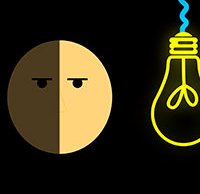Lawful lighting: Understanding light falloff using the inverse square law of light
posted Wednesday, July 20, 2016 at 5:30 PM EDT

As your light source moves further and further away from your subject, it is obvious that the light becomes dimmer. However, the light does not decrease in a linear way, but rather falls off to the square of the distance. This is the inverse square law of light.
This is an important concept for photographers who are regularly in control of their lighting. Sareesh Sudhakaran of wolfcrow has written an article and published a video aimed at explaining what the inverse square law of light is and how you can use it to your advantage.
The easiest way to remember the law as it applies to photography is that every time you double the distance between your light and your subject, with all else being equal, you lose two stops of light. Sudhakaran's example is that if you're getting an f/8 reading with a light meter at six feet away, you will get an f/4 reading at twelve feet.
To see why this is particularly important to photographers, watch the video above. If you want less falloff, you will need to move your lights further away. Of course, whether or not this is possible depends on the power of the lights and what you are trying to accomplish. There are many simultaneous issues that you are concerning yourself with, but using Sareesh's video above you can at least simplify your understanding of light falloff.
For further reading, John O'Nolan has written an excellent article about the inverse square law of light complete with a ton of easy-to-understand diagrams.
(Seen via ISO 1200)